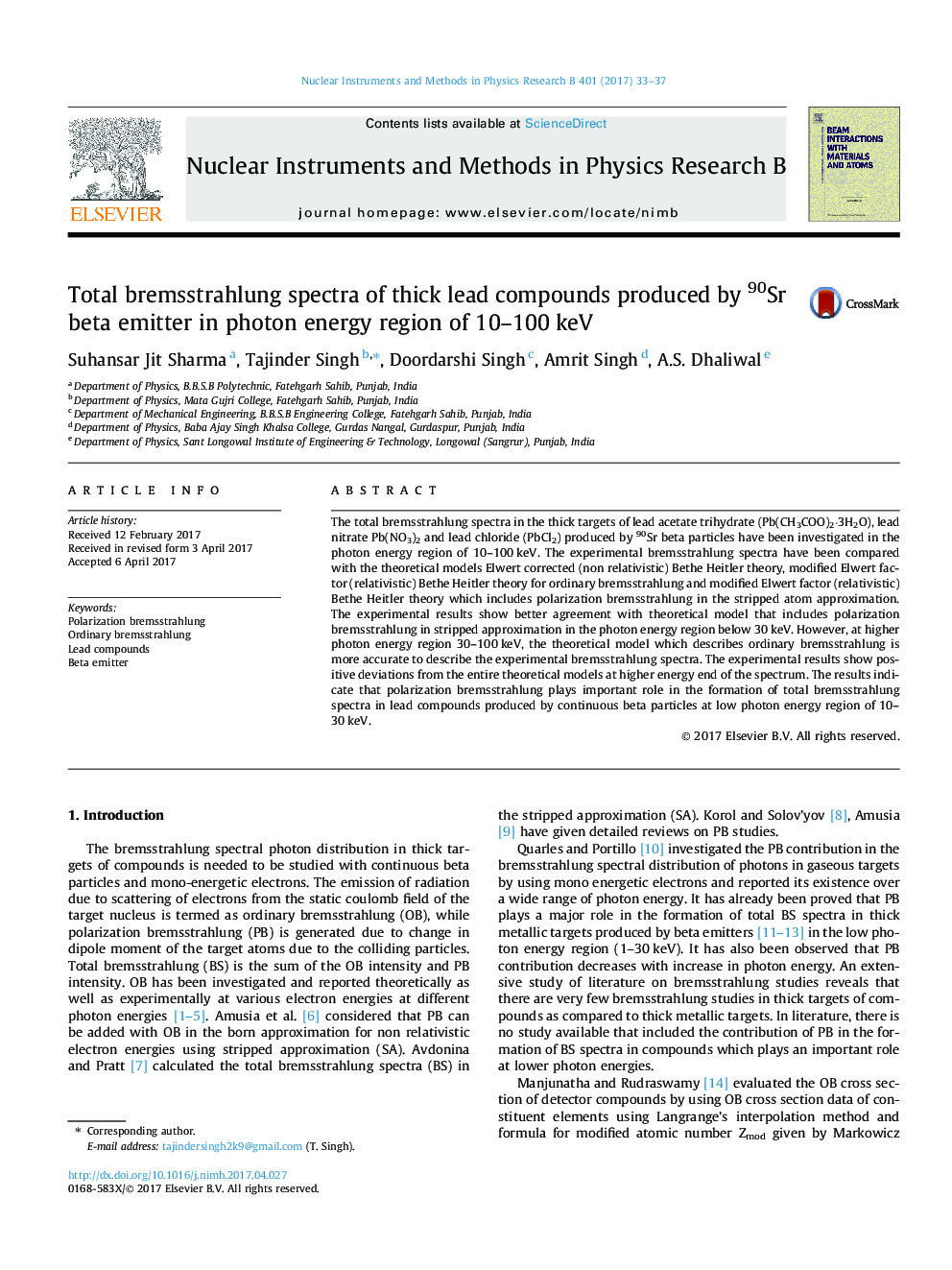| Article ID | Journal | Published Year | Pages | File Type |
|---|---|---|---|---|
| 5467320 | Nuclear Instruments and Methods in Physics Research Section B: Beam Interactions with Materials and Atoms | 2017 | 5 Pages |
Abstract
The total bremsstrahlung spectra in the thick targets of lead acetate trihydrate (Pb(CH3COO)2·3H2O), lead nitrate Pb(NO3)2 and lead chloride (PbCl2) produced by 90Sr beta particles have been investigated in the photon energy region of 10-100 keV. The experimental bremsstrahlung spectra have been compared with the theoretical models Elwert corrected (non relativistic) Bethe Heitler theory, modified Elwert factor (relativistic) Bethe Heitler theory for ordinary bremsstrahlung and modified Elwert factor (relativistic) Bethe Heitler theory which includes polarization bremsstrahlung in the stripped atom approximation. The experimental results show better agreement with theoretical model that includes polarization bremsstrahlung in stripped approximation in the photon energy region below 30 keV. However, at higher photon energy region 30-100 keV, the theoretical model which describes ordinary bremsstrahlung is more accurate to describe the experimental bremsstrahlung spectra. The experimental results show positive deviations from the entire theoretical models at higher energy end of the spectrum. The results indicate that polarization bremsstrahlung plays important role in the formation of total bremsstrahlung spectra in lead compounds produced by continuous beta particles at low photon energy region of 10-30 keV.
Related Topics
Physical Sciences and Engineering
Materials Science
Surfaces, Coatings and Films
Authors
Suhansar Jit Sharma, Tajinder Singh, Doordarshi Singh, Amrit Singh, A.S. Dhaliwal,
